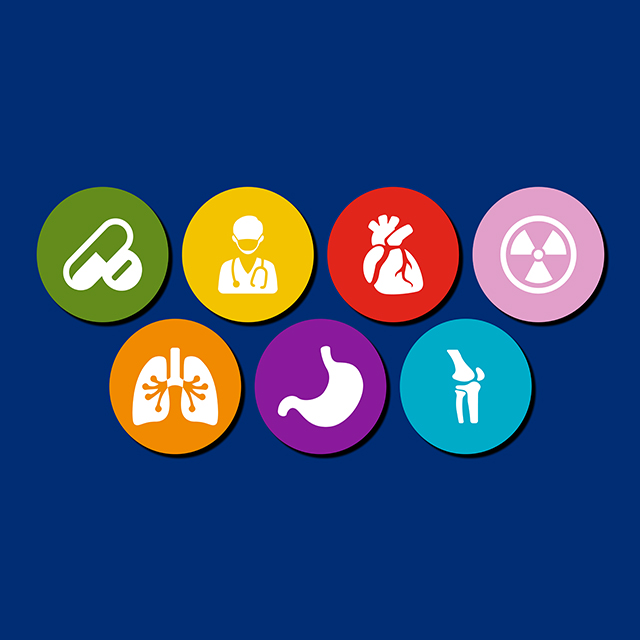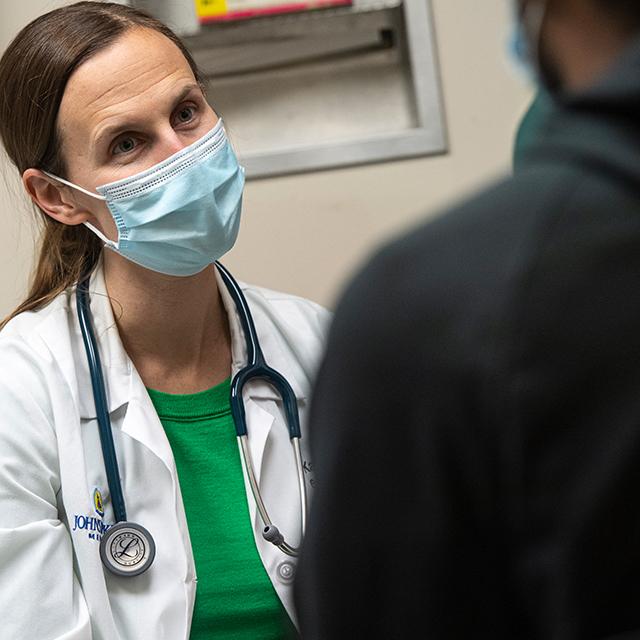When John Clarke began his senior year of residency at The Johns Hopkins Hospital in July 2001, the newest crop of Osler internal medicine residents were starting their rotations on the medical units. Among them was Michelle Estrella. “We instantly hit it off,” says Clarke. During the ensuing years, the couple got to know each other well — professionally and personally. They married in May 2004.
Clarke and Estrella — each a Longcope Firm alum — were faculty members and clinicians at The Johns Hopkins Hospital for nearly a decade. During that time, Clarke was an associate professor of medicine, and he went on to serve as director of esophageal and gastrointestinal motility, clinical director of the Johns Hopkins Center for Neurogastrointestinal Motility, and clinical director of the Division of Gastroenterology and Hepatology at Johns Hopkins Bayview Medical Center. The Fairfax, Virginia, native has received several teaching awards, including the Johns Hopkins Alumni Association Award for Excellence in Teaching. Clarke was inducted into the Miller Coulson Academy of Clinical Excellence in 2015.
Born in the Philippines, Estrella immigrated with her family to Nacogdoches, Texas, when she was 8. After performing undergraduate studies in Louisiana, she earned a medical degree at the University of Texas Health Science Center at Houston in 2001, and matched in the Osler Medical Residency Program at Johns Hopkins. She joined the Johns Hopkins faculty in 2006. After completing a nephrology fellowship, Estrella earned a master’s degree in clinical investigation at the Johns Hopkins Bloomberg School of Public Health. She went on to serve as assistant professor and, later, associate professor of nephrology at Johns Hopkins, and associate program director for the nephrology fellowship program and the T32 nephrology research training program.
In 2016, the couple relocated to California — he, to serve as director of Stanford University’s esophageal program and clinical associate professor of medicine in the Division of Gastroenterology; she, to be an associate professor of medicine in the Division of Nephrology at the University of California, San Francisco, and to help create the university’s Kidney Health Research Collaborative.
Then, in September 2020, Estrella accepted the position of chief of the Division of Nephrology at the San Francisco VA Health Care System and executive director of the Kidney Health Research Collaborative. Her research focuses on identifying markers of kidney injury, leading to earlier detection and disease management for patients with or at risk of developing kidney disease. (Clarke’s research focuses on optimizing diagnostic studies to evaluate motility disorders.)
The couple and their three children live just outside San Francisco.
What inspired you to pursue careers in your respective fields of medicine?
Estrella: I come from a family of Filipino nurses, so I spent a lot of time in hospitals. Those experiences stayed with me — the curiosity that comes with medicine and compassionate care. Some of the doctors I got to know in Texas were among the kindest people I’d ever met. At the same time, the physiology behind kidney disease clicked with the way my brain works.
Clarke: When I was in college, I liked humanities and history but realized I was better in math and science. So I found a way to apply that knowledge toward helping people. Initially, I thought about specializing in nephrology or infectious disease. But GI suited me best. It’s a mixture of clinical care and procedures. There’s a lot of variety, but you also have to look at symptoms and problem-solve. My initial resistance was that I didn’t want to do procedures. Then I discovered it was almost like playing video games in high school — but with very expensive “toys” that shed light on medical problems and help us figure out how to treat patients and make them feel better.
How has your Osler training informed you? Who were your role models?
Estrella: The connections and friendships I made at Johns Hopkins are lifelong. From the first day of residency to our wedding and beyond, I’ve been amazed at the number of residents who have stayed in touch. The Osler residency has a reputation as being very challenging, but it inspires you to rise to any occasion, find resources for the greater good of patients and lead the change that you want to see. Overall, I considered several of my co-residents as role models — some, for their brilliant clinical acumen, including John Sperati; others, for their endless optimism and compassion, including M. Patricia George.
Clarke: The years I spent at Hopkins were some of the most memorable of my life. The commitment to excellence and the people I met had a profound effect. What makes Hopkins great is that you have people who are passionate about medicine and who fundamentally excel in their work. The residency was a very intense but gratifying way to spend three years. My main take-home was teamwork. As for role models, there are many: Tony Kalloo, Steve Achuff, Redonda Miller, Landon King. There were others who were a joy to work with, including Charlie Wiener and Lou Diehl.
How is health care in California different from health care in Baltimore?
Estrella: With regard to my work at the VA system, sometimes, it’s a very well-coordinated process — a national model for access to care. Social workers, for example, can provide resources and home health visits without additional charge. At Hopkins, we often encountered patients who lacked that support. Many needed medications but couldn’t afford them.
Clarke: The East Coast and West Coast are actually very similar in terms of how we approach medical care. But there are many more HMOs here. Also, the lifestyle is more casual. I’ve worn a tie a total of six times since 2016.
Estrella: Yes, that’s true, John, but I still dress up because I like to.


